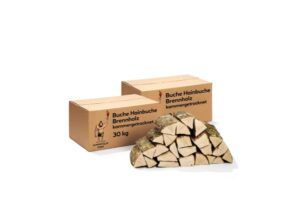The Ultimate Guide to Lathe Machine and Shaper Machine: Understanding Their Differences
In the world of machining and manufacturing, two machines are integral to shaping materials and producing high-quality parts: the lathe machine and the shaper machine. While both machines are used in metalworking, they serve distinct purposes and operate differently. In this guide, we will explore the key differences between these two machines, their applications, and how they can be used effectively in various industries.
What is a Lathe Machine?
A lathe is a versatile tool used primarily for shaping cylindrical materials. It works by rotating the workpiece against a cutting tool to perform operations like turning, boring, facing, and threading. The machine is widely used in manufacturing to create round parts, such as shafts, pulleys, and rods. Its primary function involves shaping or cutting materials by rotating them while a stationary cutting tool removes material.
Key Features of Machines:
- The workpiece rotates, while the tool stays stationary.
- Ideal for producing cylindrical shapes.
- Used for turning, boring, drilling, and knurling operations.
What is a Shaper Machine?
A machine is designed for producing flat surfaces, grooves, and keyways. Unlike the lathe, which uses rotational motion, a shaper operates by using a reciprocating motion of the cutting tool. The tool moves back and forth in a linear motion to shape the workpiece. Shapers are often used for tasks that require precision on flat surfaces, such as cutting grooves, slots, or edges.
Key Features of Machines:
- The cutting tool moves in a back-and-forth motion.
- Used for producing flat surfaces and straight cuts.
- Works with single-point cutting tools for greater precision.
Comparing Lathe Machine and Shaper Machine
While both machines are used in machining, they serve different roles. Here are the main differences between a lathe machine and a shaper machine:
1. Type of Motion
One of the primary differences between the two machines is the type of motion they use. A lathe machine rotates the workpiece, while the tool remains stationary. This rotation allows for the shaping of cylindrical parts. In contrast, the shaper machine uses a reciprocating motion of the cutting tool. The workpiece remains stationary, and the tool moves across the material in a linear direction to create flat surfaces.
2. Workpiece Type
Lathes are ideal for shaping cylindrical or round parts. This includes creating shafts, rods, and other rotationally symmetric components. Shapers, however, are suited for flat surfaces. They excel at cutting grooves, slots, and flat features on the material.
3. Applications
Lathe machines are highly versatile and can be used for a variety of operations, including turning, threading, and drilling. They are essential in industries such as automotive, aerospace, and general manufacturing for producing components that require rotational symmetry.
Shaper machines are primarily used for tasks that involve creating flat surfaces, cutting grooves, or producing intricate edges. Shapers are commonly employed in industries where precision in flat machining is required, such as tool and die making or for producing keyways.
4. Cutting Tools Used
Lathe machines use a variety of cutting tools, depending on the operation. These can include single-point and multi-point tools, as well as drills, boring bars, and tools for threading. On the other hand, shapers use a single-point cutting tool that moves across the material in a straight line. The cutting tool’s reciprocating motion is ideal for flat surface finishing.
5. Speed and Efficiency
In terms of speed, lathe machines tend to be faster than shaper machines because of the continuous rotation of the workpiece. The cutting action on a lathe is more rapid, allowing for quicker production rates. Shapers operate at a slower pace due to the reciprocating motion, which can result in a more precise but slower machining process.
6. Precision and Accuracy
Both machines offer high levels of precision, but they excel in different areas. Lathe machines provide exceptional accuracy when working on cylindrical components, while shaper machines are highly effective for precision work on flat surfaces. The level of detail that can be achieved with a shaper machine is ideal for creating smooth, fine finishes on horizontal and vertical surfaces.
7. Cost and Maintenance
Lathe machines tend to be more expensive than shapers due to their versatility and complexity. They require more maintenance and have more moving parts. Shapers, with their simpler design and operation, are generally less expensive and easier to maintain.
Which Machine is Right for Your Needs?
Choosing between a lathe machine and a shaper machine depends on the specific needs of your project. If you need to create cylindrical parts or perform operations like turning, boring, or threading, a lathe is the ideal choice. On the other hand, if your work requires creating flat surfaces, grooves, or keyways, a shaper will provide better precision and accuracy.
Lathe Machines are perfect for:
- Manufacturing cylindrical parts like shafts, rods, and pulleys.
- Performing turning, drilling, and boring operations.
- Producing threads and other rotationally symmetric components.
Shaper Machines are suitable for:
- Cutting flat surfaces and grooves.
- Producing intricate edges and slots.
- Shaping keyways and other detailed cuts.
Conclusion
Both the lathe machine and the shaper machine are essential in modern manufacturing. While the lathe excels at creating cylindrical parts and performing a wide range of operations, the shaper shines in producing precise flat surfaces and intricate details. Understanding the differences between these two machines is key to optimizing your machining processes and selecting the right tool for your specific needs. By carefully considering the types of parts you need to create and the nature of the work involved, you can choose the right machine to maximize productivity and achieve the best results. Whether you are working in aerospace, automotive, or any other manufacturing sector, knowing when to use a lathe or a shaper will help you enhance your machining operations
For More Blogs Visit : https://freshvoicehub.com/














Post Comment